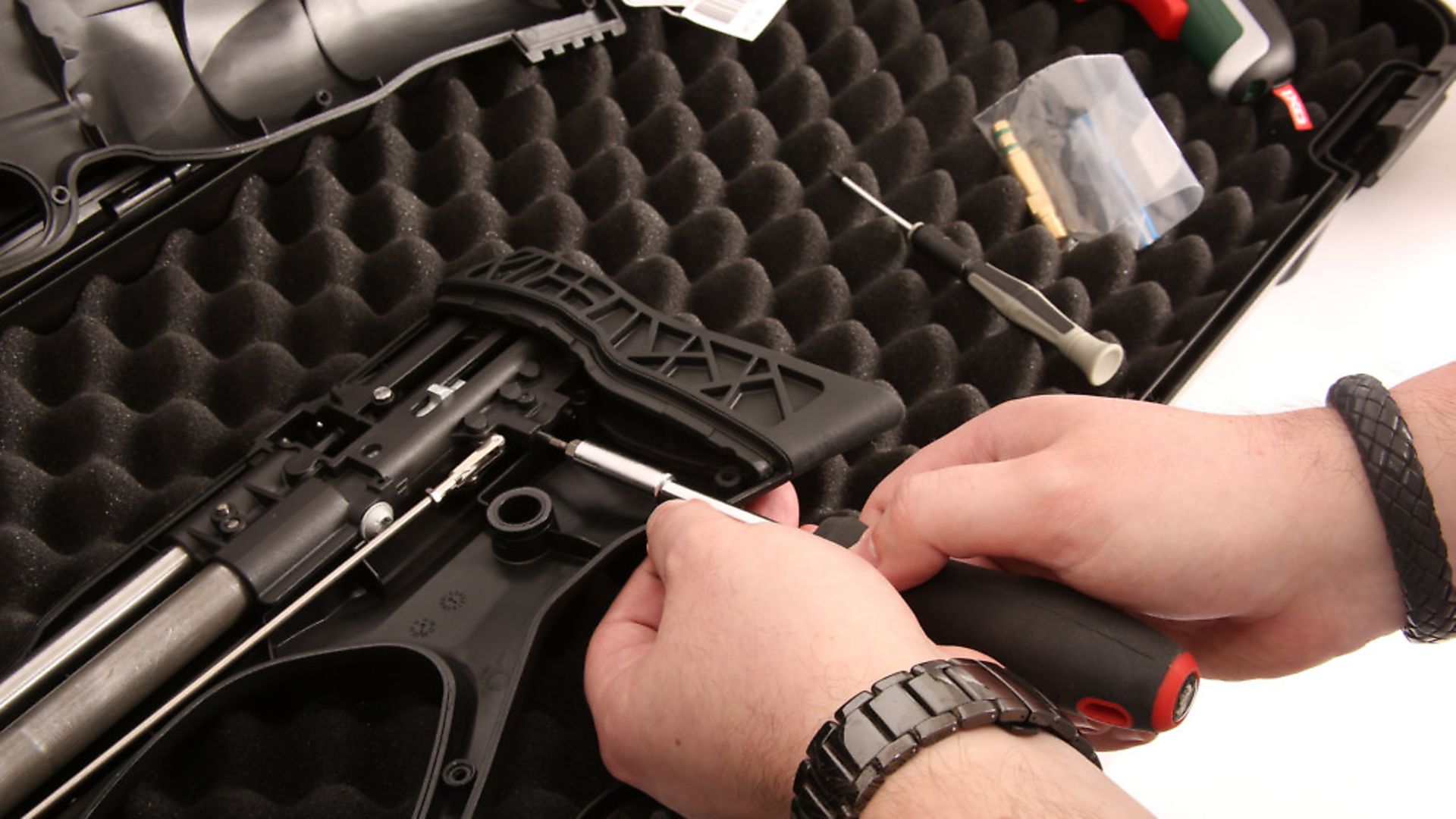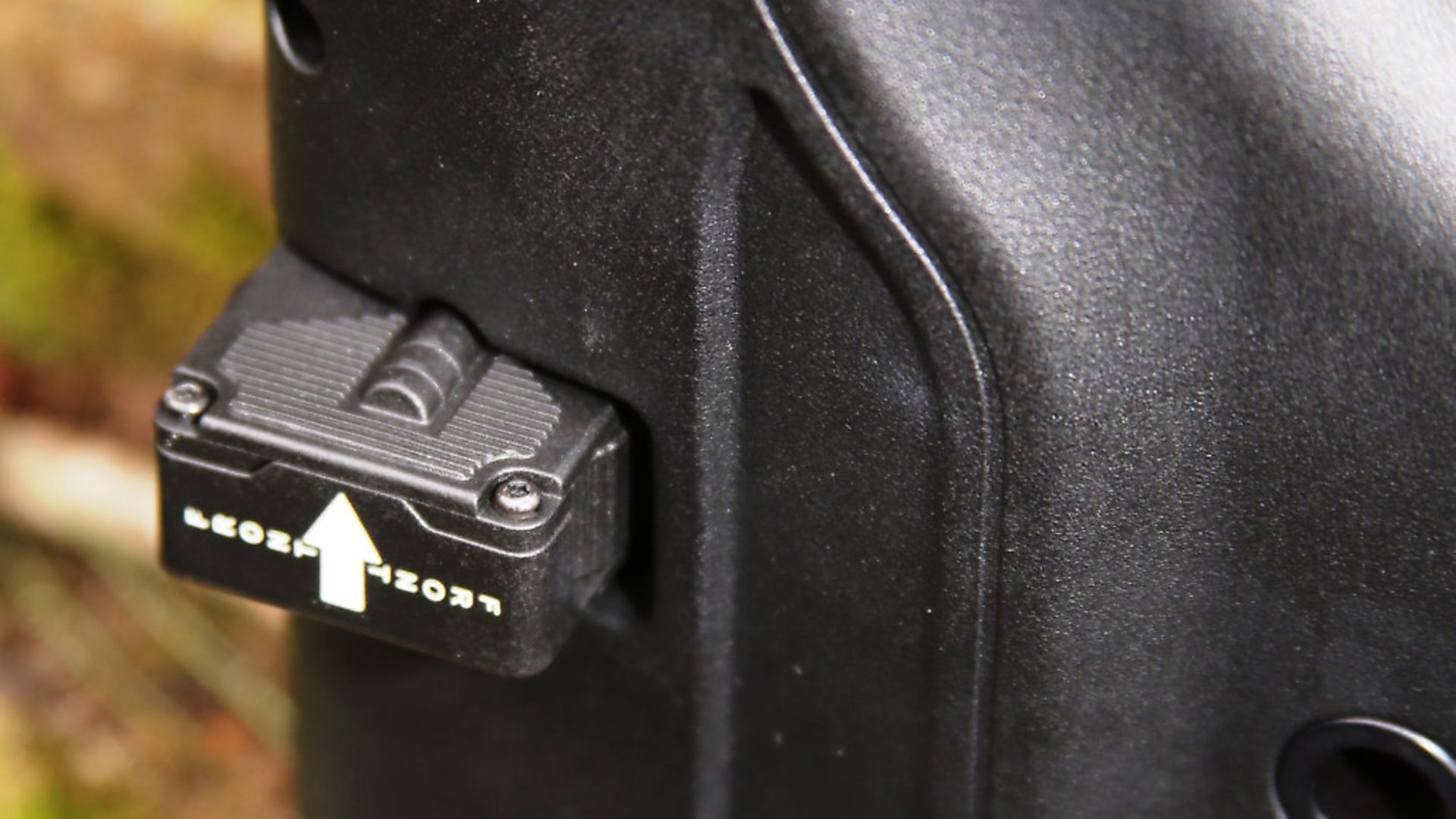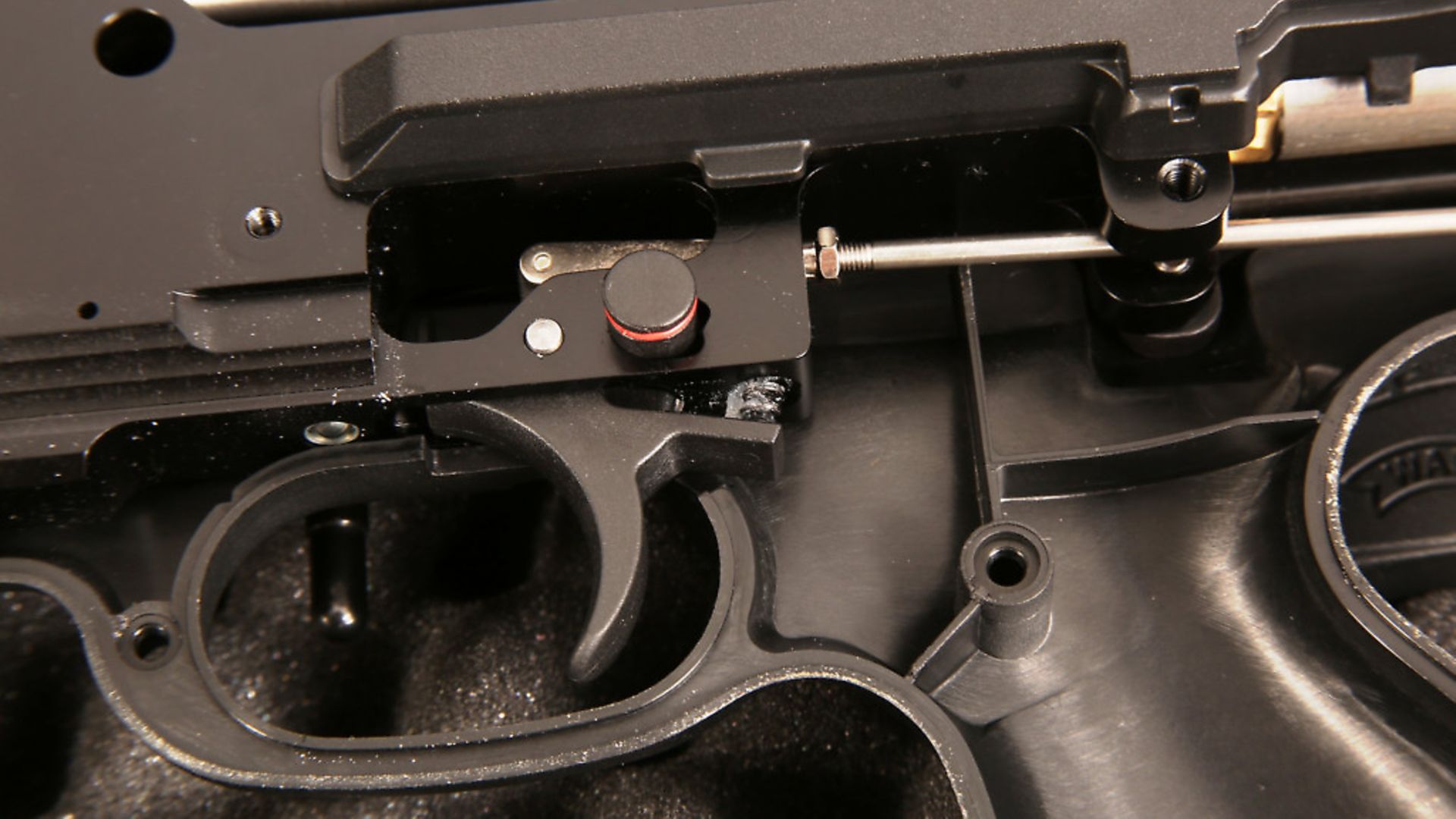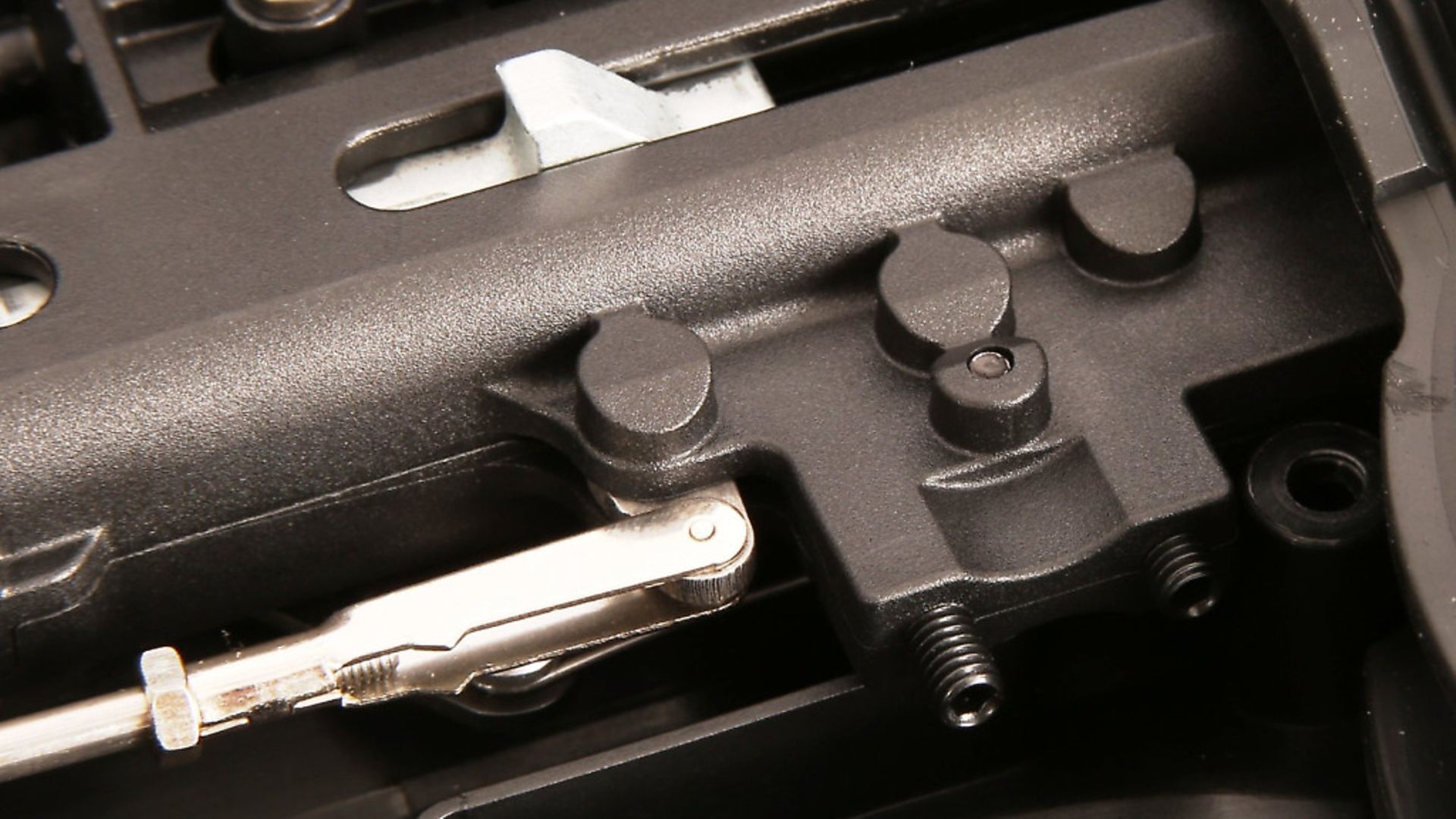The editor gets to grips with a breakthrough prototype – the Walther Reign
 credit: Archant
credit: Archant
When I handled the first prototype of what would become the Umarex Walther Reign bullpup, it was so light that my immediate response to its development team was, 'How much heavier will the production gun be?' I was then told the prototype's weight was, give or take a few grammes, exactly what the finished article would be. I'm a polite person and I have the utmost respect for the Umarex specialists who were gathered in that meeting room, so I tried to disguise my disbelief as pleasant surprise, but I'm rubbish at acting and I was sussed immediately.
As it turned out, my scepticism was unfounded and the Reign did, indeed, emerge from development with an unscoped weight of just 5.5lbs. It emerged with a lot more than that, though, including a comparatively lightweight £799 price tag, the ability to switch it between left- and right-handed use, a choice of three sight-mounting rails, an overall length of just 687mm (27 ins), and a regulated action that produces around 180 shots in .22 and 150 in .177. There's even more to discover from this already remarkable air rifle, so I'd better crack on with it.
 credit: Archant
credit: Archant
Overview
Bullpups are the most 'Marmite' of airguns, and that 'love it or hate it' status covers visuals as well as the unique handling qualities they exhibit. Even in the world of the bullpup, the Reign does things its own way, most noticeably with that distinctive lack of heft. Everyone who has handled the guns on test - I have two, already configured for left- and right-handers - has followed my first reaction and commented on the weight. In case my customary subtlety has caused me to miss the point, here, this is one extremely light rifle.
The Walther Reign is a pre-charged pneumatic, sidelever-activated, multi-shot sporter, with its action and buddy-bottle air reservoir completely enclosed within a matte-black, ambidextrous, polymer 'shell' of a thumbhole stock. The match grade, fully-shrouded barrel is threaded ½-inch UNF for a silencer and there's a curved rubberised butt pad to fix the Reign securely into the shoulder.
Again, you either like its radical styling or you don't. For the record, I think once any designer has moved away from the classic sporter brief, all bets are off. I like the Reign's contradiction of chunky looks and light weight, and my approval of this innovative bullpup increased the more I used it. More of that later; let's take a hands-on approach to another of the Reign's unique features.
 credit: Archant
credit: Archant
Total trigger deconstruction
Also enclosed by that super-tough polymer casing, is the Reign's two-stage adjustable trigger mechanism, including its adjusters. First question, then; how do I adjust it? Simple answer - take the stock apart. You what? Yes, adjusting the Reign's trigger involves completely separating the stock, by removing all 17, Torx T10 fixing screws, to expose the trigger mechanism and its adjusters.
Three of those Torx screws are threaded for metal, rather than polymer fixtures, so make sure these go back exactly where they came from. Also, three of the screws are more deeply recessed than the rest, and I had to buy a £1.99 Torx driver to back up my battery-powered screwdriver to get at them. Now for the good news.
 credit: Archant
credit: Archant
Speed test
As possibly the least-accomplished airgun DIY person on this, or any, planet, I had grave misgivings about dismembering the Reign, and the only reason I attempted it was the fact that I had one in reserve, should I wreck the first rifle. Thus, I set to, started my stopwatch, and methodically unscrewed the Walther Reign. In just shy of four minutes I had the stock in half and the action completely exposed - and I was taking my time.
Another couple of minutes later and I'd tweaked the second-stage sear engagement into fingertip obedience and I was ready to close the deal. Including a final manual tension check on all 17 screws, this took less than three minutes, giving a sub-10-minute overall time to adjust the Reign's trigger.
Frankly, I amazed myself, and whilst I'll leave it to Walther to issue full trigger adjustment instructions, I'll state with absolute confidence that if I can do it, pretty much anyone can. In more basic terms; do not let the trigger adjustment procedure put you off this rifle.
 credit: Archant
credit: Archant
Swapping hands
On a related subject, Walther advise taking the Reign to an authorised dealer if you want to swap its sidelever and safety catch from one side to the other. That's good advice and I'd never undermine those who know as much about their products as the Umarex/Walther crew, but I'd still say changing the orientation of that lever is a job most competent owners could do, especially if full instructions are provided.
The magazine
In .177 calibre, the Reign's removable magazine will hold 11 pellets, with 10 in .22 and 9 in .25. Loading the magazine involves simply dropping pellets into each vacant chamber until the mag is filled, after which it slots into either side of the action, keeping the white arrow pointing forward, as indicated. There's talk of incorporating a keyway into production samples to make it impossible to get magazine insertion wrong, but this seems like overkill to me. Knowing Walther, they'll do it anyway.
 credit: Archant
credit: Archant
The sight mounting rail
Walther intend to offer the Reign with a choice of Picatinny or standard dovetail scope rails, plus a short Picatinny for those who prefer a red-dot sight. I'm not sure why a red-dot can't just be fixed to a full-length Picatinny rail, but I'm sure all manner of homework has been done and there's a perfectly valid reason for this option. The test rifles came fitted with dovetails and these served their purpose perfectly, as of course they should on a recoilless rifle.
With the centreline of the scope so far above the bore, I predict plenty of Reign owners will be fitting some sort of spirit level to mitigate against the curse of cant, and the equally curseworthy 'phantom windage' it inflicts on us.
Fit for purpose
I have no need to state that I'm not a normal-sized human, and that most non-adjustable rifles are not designed to fit me, but here I am stating it, anyway. That said, the Reign suited my general geometry more than most off-the-shelf guns do, due to its fat fore end and the fact that I'm able to 'hang' my hand on the grip. The fore end is fat because it has to circumnavigate a 280cc buddy bottle, although I've yet to see those with smaller hands struggle with it.
The pull-length of the Reign - distance from trigger blade to butt pad - is 12.5 inches, which is around an inch shorter than usual, but it somehow accommodates me and just about everyone else who tried the test rifles. Similarly, eye-scope alignment is a done deal, provided you choose the correct height mounts, and I'd advise you to take all the time and care required to choose wisely. Head position has more of an effect on our overall stance than many shooters appreciate, and I assure you it's worth getting it as close to perfect as you can.
The fore end
Moulded into the underside of the fore end, is a short section of Picatinny rail, and this can be regarded either as a natural hand stop, or an uncomfortable ergonomic carbuncle, depending on how you prefer to place your leading hand. Since learning about the unfortunate reader who allowed his finger to stray in front of his bullpup's muzzle, I'm leaning toward the 'hand stop' consideration. I'd put a stubby silencer on the Reign, for sure, so the under rail would become a moot point for me as far as being a tactile reminder goes.
Shooting performance
I'm told the Walther Reign is regulated, although that's the full extent of the technical detail that has been afforded me. The chronograph agrees with that description, and Walther has developed a powerplant that keeps overall shot-to-shot variation hovering around 16 f.p.s. over the first 50 shots of the charge for the .22 rifles on test, using Air Arms Diabolo Field pellets straight from the tin. Chrono' tests carried out after a week of fairly intensive shooting showed a very slight improvement on this variation, although a couple of f.p.s. here or there is of no significance in the real world, and that's where I prefer to live when I'm testing airguns.
Downrange accuracy
At 40 yards, this rifle will print 18mm diameter groups, provided the Reign is softly braced on a beanbag or rifle rest. Here's where the 'benefit' of having such a light rifle comes home to roost. Light guns can be twitchy. That's why Olympic target shooters use rifles that weigh almost three times as much as a Walther Reign, but this bullpup isn't designed to win gold medals, it's a lightweight sporter, and an extremely efficient one. Yes, light rifles will test your technique and they don't absorb those mini-twitches as well as a hefty hunting gun, but if you want one of those, there's no shortage of choice. The Reign is genuinely different, and it should be treated as such.
Initial verdict
First, it must be remembered that what I'm testing here is a prototype. It's probably 90% of the finished article and there will be tweaks and touches added before production specification is finalised. Also, I'll soon be taking my test results, recommendations and overall impressions of the Reign to Walther headquarters in Germany for a two-day test and evaluation session, and the company's domestic field testers will be doing the same, so there's every chance that further refinements will be added.
As it stands, the Walther Reign is extremely accurate, highly air-efficient, consistent, supremely easy to handle and operate, and I believe it offers a new take on the bullpup phenomenon. I'll carry on testing these prototypes and logging my essential data, but I've been doing this job long enough to know a winner when I see one. I'll declare, here and now, that when this rifle is released in the summer, Walther's main challenge will be keeping up with demand for it.
Specification
Model: Reign
Manufacturer: Umarex/Walther
Country of origin: Germany
Type: Pre-charged, multi-shot, bullpup sporter with fully ambidextrous design
Calibre: .22, .177, .25
Cocking/loading: Sidelever
Loading: Via removable, rotary multi-shot magazine
Trigger: 2-stage, adjustable, with manual, resettable safety
Stock type: Ambidextrous polymer - sidelever can be switched to either side
Weight: 2.5kg (5.5lbs)
Length: 687mm (27 ins)
Barrel: 430mm (17ins)
Fill pressure: Max 230 bar
Shots per charge: 180 in .22, 140 in .177 at sub-12 ft.lbs. configuration
Average energy: 11.4 ft.lbs.
Distributor: John Rothery Wholesale
Contact: All good gun shops
RRP: £799